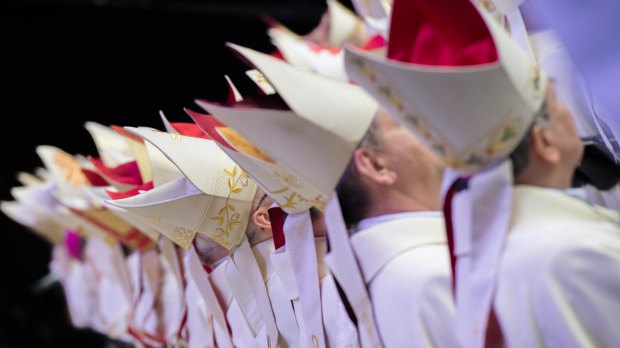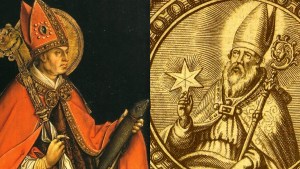Since his election to the See of Peter, Pope Francis has repeatedly emphasized the role of women in the Church. On the one hand, his emphasis is theological:
But the Church is Mother, the Church is woman. And since mothers bestow life, and women “keep” the world, let us all make greater efforts to promote mothers and to protect women.
But as well, the Holy Father is making efforts in the more practical sphere, namely with positions in the Roman Curia.
“Two women will be appointed for the first time in the committee to elect bishops in the Congregation for Bishops,” he told Reuters. “This way, things are opening up a bit”
Pope Francis told the Reuters news agency about the upcoming appointment in an interview held on July 2, 2022, a new part of which was released July 6. It hasn’t been announced who the two women are nor when they will start.
The new Apostolic Constitution Praedicate Evangelium opens the possibility of lay people – men and women – taking the head of a dicastery.
Other roles?
When asked about dicasteries that could be headed by a lay person, Pope Francis mentioned the dicastery for Culture and Education and the Vatican Library, according to Reuters.
According to Vatican News, last month, Cardinal Kevin Farrell, the prefect of the Dicastery for the Laity, Family and Life, joked that, with the promulgation of the new Constitution on the Curia, he might be the last cleric to lead that dicastery.
Last year, Pope Francis made several appointments of women: Sister Raffaella Petrini, to the number two position in the Vatican City Governorate, making her the first woman to hold the position. As well: Sister Alessandra Smerilli as number two in the dicastery for the Service of Integral Human Development, Sister Nathalie Becquart as under-secretary of the Synod of Bishops, and Sister Raffaella Petrini as secretary general of the Governorate of Vatican City State. Cristiane Murray is the deputy director of the Vatican Press Office.
In 2016, Barbara Jatta became the first director of the Vatican Museums in history. In the position of undersecretary, the Pope has named Gabriella Gambino and Linda Ghisoni to the dicastery for the Laity, Family and Life, Sister Carmen Ros Nortes to the congregation for Institutes of Consecrated Life, and Francesca Di Giovanni to the section for Relations with States of the Secretary of State.
The complex task of appointing bishops
Currently headed by Cardinal Marc Ouellet, the Dicastery for Bishops is responsible for appointing all bishops in territories not under the jurisdiction of the Dicastery for Evangelization.
There are 25 people in this dicastery, the vast majority of whom are cardinals. Cardinal Secretary of State Pietro Parolin and the American Cardinal Blase Cupich are among them, for example. The dicastery also includes bishops, such as Archbishop Michel Aupetit, who remains on the dicastery despite his resignation from the Archdiocese of Paris in December 2021.
The work of the members of the dicastery involves evaluating the profiles of priests or bishops for a diocese whose seat is vacant. For this, they rely heavily on the work done by the apostolic nuncios (the pope’s representatives) in the countries. They must submit names to Rome for each diocese that will form the “terna.”
The members of the dicastery meet every two weeks and study 4 ‘terna,’ or 12 profiles, at each session. Each case is presented for about thirty minutes by one of the members of the dicastery. The opinion of each member is then shared. The qualities and limitations of the candidate are taken into consideration – faith, capacity for accompaniment, government, spirituality, human qualities, etc. – as well as the particularity of the diocese.
Once the reflection is completed, the prefect of the dicastery presents the conclusions to Pope Francis, who then decides among the three names submitted. For dioceses he knows well, Pope Francis may ask to consider a profile that is not in the terna.
Rome’s choice may then finally be communicated to the candidate, who at no time has been made aware of the process.
In recent years, I.MEDIA has been told, more and more priests refuse the selection, because of the pressures involved in being a bishop, particularly that generated by the handling of abuse cases. “It happens one in three or four times,” says a member of the dicastery.


